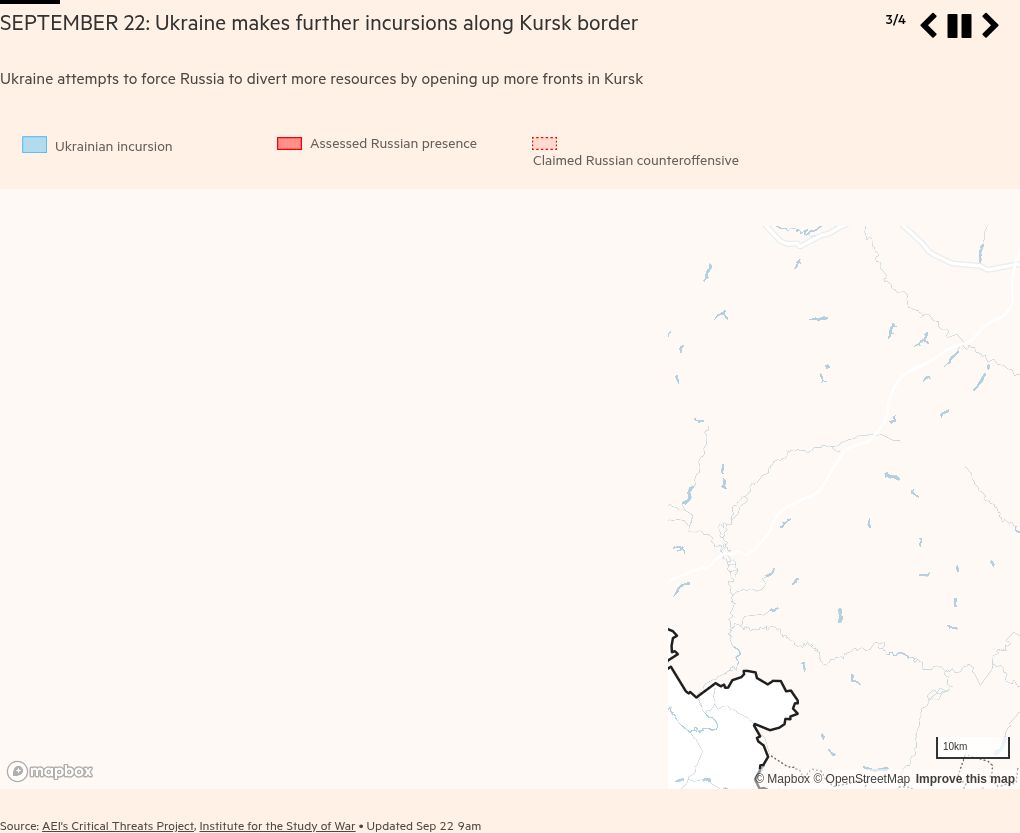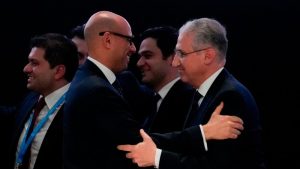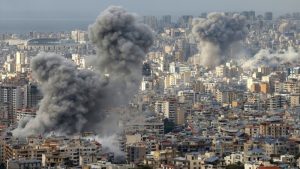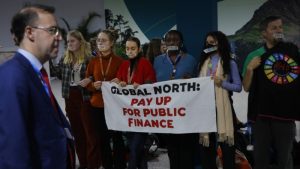‘Elite units’ or ‘cannon fodder’? North Korean troops enter Russia’s war in Ukraine

Kyiv is on high alert as it awaits the possible entry of North Korean forces into Russia’s war against Ukraine as soon as this week, in what would be the first intervention by a foreign army with its own troops on either side of the conflict.
Senior Ukrainian intelligence officials told the Financial Times that about 3,000 North Korean troops have been secretly transported in civilian trucks from Russia’s far east to its western Kursk region. One official said that only a few hundred of those 3,000 were special forces, the others being regular troops. They were housed on Monday in barracks about 50 kilometres from the Ukrainian border, where they were awaiting further orders from Russian command, the officials said.
Ukraine’s President Volodymyr Zelenskyy on Tuesday said he had “shared data with his South Korean counterpart on the North Korean deployment, which he said was “expected to increase to approximately 12,000”.
“The conclusion is clear — this war is becoming internationalised, extending beyond two countries,” Zelenskyy said.
The entry of North Korean forces in Russia’s war in Ukraine would represent a significant expansion of the conflict. Nato secretary-general Mark Rutte confirmed on Monday that North Korean troops had been deployed to the Kursk region, in what he called “a significant escalation in the DPRK’s ongoing involvement in Russia’s illegal war”.
According to South Korea’s National Intelligence Service, the first contingent of North Korean troops to arrive in Russia earlier this month were from the country’s Eleventh Army, an elite light infantry unit known as the “Storm Corps”.
The North Korean deployment is expected to bolster a 50,000-strong Russian force that has stepped up efforts in recent days to wrest back control of Kursk, where Kyiv has lost nearly half of the 1,100 sq km of territory it claimed to have captured in a surprise August incursion, according to military analysts.
But Ukrainian intelligence officials have questioned the quality and fighting ability of the North Korean arrivals, describing the majority as inexperienced, low-ranking foot soldiers.
“They have never left their country before . . . They have never fought in actual combat and their experience is very far from the reality of modern warfare,” said a senior Ukrainian intelligence official.
The North Korean troops only got their first glimpse of the various types of killer drones that have become ubiquitous on the battlefield at Russian training camps “in recent weeks”, the official added.
Ukrainian officials said they believed the North Koreans could be used as “cannon fodder” by the Russians, who have employed a brutal yet effective assault tactic of sending “meat waves” of troops across no man’s land.
“Have they engaged in trench warfare before? I doubt it,” said another Ukrainian intelligence official, who like others spoke on the condition of anonymity.
Scott Boston, a senior defence analyst at the Rand Corporation, said such tactics would discourage Pyongyang from sending higher-quality troops.
“You don’t use good iron to make a nail,” said Boston. “You don’t send your very best if they’re going to just be fed into the woodchipper.”
But Yang Uk, a defence expert at the Asan Institute for Policy Studies in Seoul, questioned the feasibility of such a strategy given the co-ordination required for joint offensive operations with Russian units.
“The North Koreans will not be able to speak Russian and the two armies will have a very different strategic culture, so to co-ordinate with them while using them as ‘disposable troops’ would be very risky and difficult,” he said.
“If I were a Russian commander, I would use [the North Koreans] for defensive operations, which would require much less preparation time,” Yang added.
One of the Ukrainian officials noted that if used as storm troops, the North Koreans would be at greater risk of capture, which would shatter Moscow and Pyongyang’s veneer of deniability about their engagement.
A senior intelligence official told the FT last week that the North Koreans had been given false documents identifying them as Buryats, an indigenous group in Siberia, to conceal their identities.

Moscow has not acknowledged the North Korean deployment, though the Kremlin has said such a move would be justified under a strategic partnership signed by Russian President Vladimir Putin and North Korea’s Kim Jong Un in June.
Sergei Lavrov, Russia’s foreign minister, suggested that Moscow was responding to western military advisers helping Ukrainian forces operate sophisticated long-range missiles such as the US Atacams or UK- and France-made Storm Shadow.
On Tuesday, Russia’s embassy in Pyongyang said North Korean foreign minister Choe Son Hui had departed for a trip to Moscow, the latest in a flurry of high-level contacts.
But according to South Korean lawmakers briefed by the NIS, the two sides are struggling with communication issues.
“The Russian military was teaching the North Korean military some 100 Russian military terms such as ‘back to your position’, ‘fire’ and ‘launch’ . . . but the North Korean military was struggling [to understand],” Lee Seong-kweun, a member of the South Korean National Assembly’s intelligence committee, told reporters on Tuesday.
Over the weekend, the GUR, Ukraine’s military intelligence directorate, published what it claimed were intercepted calls over encrypted lines between Russian troops criticising the North Korean soldiers.
In one of the calls — which could not be independently verified by the FT — intercepted in the Kursk region, a Russian soldier expresses anger over orders to allocate armoured vehicles, which are already in short supply, to the North Korean troops.
In another, a Russian officer is heard saying that one translator and three Russian servicemen will be assigned to every group of 30 North Korean soldiers. But the Russians express doubts about whether high command will be able to send enough commanders to lead the foreign units.
Go Myong-Hyun, a senior fellow at South Korea’s state-affiliated Institute for National Security Strategy in Seoul, said the North Korean soldiers were unlikely to be the “North Korean equivalent of the SAS or Seal Team 6”, referring to UK and US special forces.
“They won’t be super-soldiers but they will be young, resilient, in decent physical condition, and a lot better than regiments made up of middle-aged Russian ex-prisoners,” Go said.
Russia has recruited smaller numbers of foreign fighters to fill its ranks, including mercenaries from Cuba, Nepal and Syria, and has forced migrants from African nations on work visas to enlist. They have also tricked or pressured Indian citizens into joining the army.
Pyongyang has also previously supplied Moscow with millions of artillery shells and other weapons, including KN-23 ballistic missiles, which were accompanied by North Korean officers and engineers sent to oversee their battlefield use, said Ukrainian and South Korean officials.
Ukraine has launched a Korean-language campaign on the Telegram messaging app in an attempt to encourage North Korean soldiers to surrender. Part of the “I Want To Live” campaign targeting demoralised Russian recruits, the posts include pictures of stacked bowls of rice and meat, and warm and well-equipped prison facilities.
Ukraine has also circulated a Ukrainian-Korean manual with key phrases in the event that Kyiv’s troops encounter North Koreans on the battlefield and need to negotiate their surrender.
Ryu Seong-hyun, a North Korean escapee who served almost a decade in the Korean People’s Army, noted that North Korean troops “aren’t likely to feel as bad in Russia as we think, as North Korea itself is a prison for them”.
“They may not be aware of the current situation between Russia and Ukraine, but they know that they should fight for their country’s national interests,” said Ryu, “Having been subject to the mandatory military service of 10 years, they are trained to follow orders without thinking”.
Ryu added that soldiers who distinguished themselves on the battlefield would earn a rare opportunity to advance their families’ position within North Korea’s rigid hierarchy, providing extra motivation. “Poor families will have some glimmer of hope that when their son returns from the war, their status can be changed.”
Some analysts have speculated that the North Korean deployment could amount to the high tens of thousands or more, given that more than 1.3mn people serve in the KPA according to US defence intelligence estimates.
But Andrei Lankov, a North Korea expert at Kookmin University in Seoul, said the regime’s reluctance to send too many of its citizens abroad — which could risk large-scale defections as well as returnees introducing foreign ideas and influences — would likely limit the total deployment to the low tens of thousands.
“Soldiers from elite units will mostly be the sons of low-ranking officials, who are loyal but not privileged and who will see war as giving them the possibility of advancement,” said Lankov.
“Even soldiers from good backgrounds . . . are not members of the nobility, and they can be sacrificed,” he added. “But the more they send, the more trouble they may feel they are storing up, and this will limit the extent of their participation in the war.”
#Elite #units #cannon #fodder #North #Korean #troops #enter #Russias #war #Ukraine




